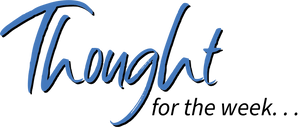By this time of year, students often fall into a pattern of using a familiar yet narrow set of study strategies. While some of their go-to approaches may seem to be working well enough, exposure to and use of a wider array of strategies can break up tired routines, add novelty to study experiences, increase the amount of learning students gain, and lengthen the time they retain it.
Students may be unaware of additional effective ways to study and need instruction and support to try them out. Some students may know additional strategies, but they have gradually migrated away from them and need a reminder. Students may also be reluctant to try new study techniques, assuming that the strategies they are using are good enough.
Regardless, we want students to know and be able to apply the best study strategies for the content or skill they are learning. We also know that when students play an active role in exploring, practicing, and deciding the best strategies for themselves, they are more likely to engage with and ultimately adopt the tools that meet their needs.
Consider dedicating time during a coming week or unit to introducing and having students try out a variety of study strategies. Each day might feature a different study strategy for students to apply and evaluate. The curriculum content and skills you already have planned for the week or unit can be a useful area of application for a set of study strategies that are research-based and experience-proven. We might even choose a fun title for the series such as Put-Study-Strategies-to-the-Test Week or Five-Days-of-Study-Tool Tryouts. The key is to position students to try, reflect, and assess the impact of each study strategy on their learning and recall.
Each day of the week might feature a different study strategy for students to test. Once we have introduced a piece of content, a new skill, or a learning challenge, we might teach or review the learning strategy to be tested that day or evening. We can begin class the following day with feedback from students about their study strategy experience and invite recommendations for how and when the strategy might be used.
Here is a potential line-up of strategies students could test over the course of a week. Of course, you might spread the tryout period out and address one study tool each week throughout a unit. The key is to plan for the intentional application of these strategies, however that best fits your particular schedule, curriculum, and students.
Skill 1/Monday—Self-Quizzing
Advise students to create questions and pre-assess themselves on the topic or content before they begin to study. Even incorrect answers help to focus attention and look for key information as their study period unfolds. When finished studying, students can self-test again, using questions from the pre-assessment and developing other questions that seem relevant from the study session. The time spent pre- and post-testing themselves will generate more learning than additional time they might have spent simply rereading or reviewing highlighted content.
Skill 2/Tuesday—Interleaving
Coach students to include multiple skills or concepts within the same learning or study session. For example, students might study math and chemistry in the same session, mix new information with review of past learning, or address content out of chronological order. The process of addressing multiple concepts or skills in the same session keeps the brain alert and improves its ability to differentiate elements and aspects of the content students are learning.
Skill 3/Wednesday—Drawing/Visual Organizers
Drawing pictures of what we want to remember has been shown to be more than twice as powerful as writing down new content. It is important to note that the artistic talent displayed, or the quality of drawing students produce, does not appear to influence the benefits gained from the drawing activity. Further, the amount of time invested in drawing pictures for this purpose also does not appear to be a significant factor in the strategy's effectiveness. Even a few minutes spent drawing what students read and hear can generate significant advantages in later recall.
Skill 4/Thursday—Retrieval Practice
This strategy can fit well later in the week or unit when we want students to recall what was learned earlier or access background information in order to prepare them for new learning. Students begin with a “brain dump” by recounting, verbally or in writing, everything they can recall from prior learning related to the recall target. Students can quickly refresh their memories while identifying areas that may need reinforcement. Interestingly, this approach has been shown to be more efficient and effective than reteaching. Of course, we can encourage students to repeat this process on their own as they prepare for exams individually or in small groups. A key benefit associated with this activity is its ability to extend recall well beyond the completion of a unit of study or an exam.
Skill 5/Friday—Teach a Friend
Have students develop a mini lesson to teach the content or skill they are learning and share their lesson with a family member, friend, or classmate. The process of organizing information and sharing with others helps to deepen understanding, clear up confusion, and fill learning gaps. In addition, teaching consolidates new learning and extends learning retention.
We want to give our students access to the best and widest set of study strategies possible. The more options they have, the more likely they will be to choose an option that works for them. When we involve students in exploring and testing study tool options, we also increase the likelihood that they will remember and continue to use a wider array of tools after they leave us.















